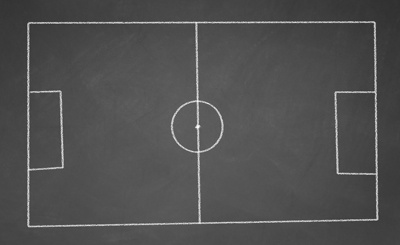 Nowadays, the markings of a football pitch are as well known to fans of the sport as the outline of the Empire State Building or the silhouette of Big Ben. The look of a football pitch is iconic; from the centre circle down to the penalty box, we’d all notice if we turned up at our favourite stadium and something wasn’t quite right.
Nowadays, the markings of a football pitch are as well known to fans of the sport as the outline of the Empire State Building or the silhouette of Big Ben. The look of a football pitch is iconic; from the centre circle down to the penalty box, we’d all notice if we turned up at our favourite stadium and something wasn’t quite right.
Yet what most people don’t know is how that look came about. Why is the penalty box where it is? Where did the idea of a six-yard box come from? Can there be changes to the way the pitch looks, or is it written in stone now?
In this article we’ll explore all of those questions, taking a look at how the football pitch came to look like a football pitch. It’s not as straightforward as you might imagine, with the changes in the rules of the game dictating what the pitch has looked like over the years.
If you want more of an idea about how pitches have changed in general over the years then you can have a look at our article entitled How Have Football Pitches Changed Through History?. That is more about the technology behind pitches, such as the introduction of undersoil heating and the use of article turf. This article, meanwhile, is simply about the markings you’ll see when you attend a match…
How Did Pitches Used To Look?
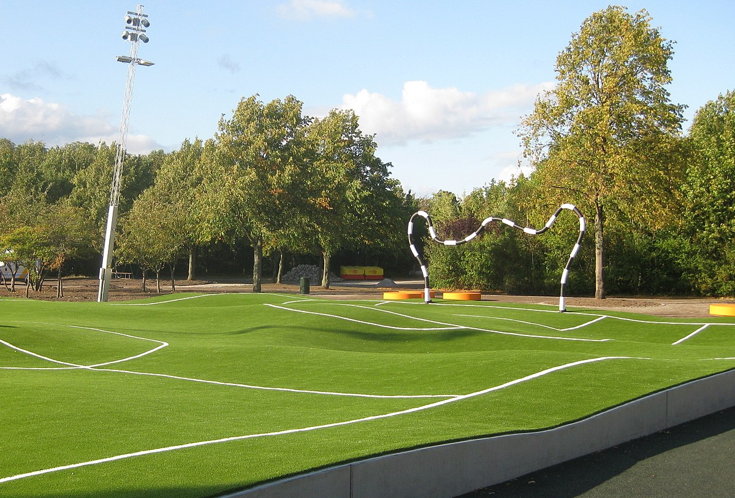
If you’re going to explore how football pitch markings have developed over the years then the most important place to start is right back at the beginning. Back in 1863, when the Football Association was first formed, the pitch markings were far more rudimentary than they are now. When say rudimentary we might even be understating things a little bit, given that there basically weren’t any. That’s because the FA didn’t specify any rules on markings back then and the entire world of football was a little bit like the Wild West. Pitches could be basically any length up to two-hundred yards, whilst width-wise the length was up to one-hundred yards.
In fact, the only things back in 1863 that modern football fans would recognise were the corner flags, which were in place simply to mark the very corners of the pitch, and the distance between the goalposts. The goalposts were eight yards apart – exactly the same distance as they need to be today. In the majority of cases there was nothing to indicate the edge of the pitch, nor the end of it. To an extent that was due to the fact that pitches during football’s more formative years were just patches of grass wherever they could be found. It wasn’t until the sport became far more established that most clubs had their own homes and were able to lay down proper pitch markings, which was handy because that coincided with the rules becoming more official and pitches reflecting that.
The First Major Changes
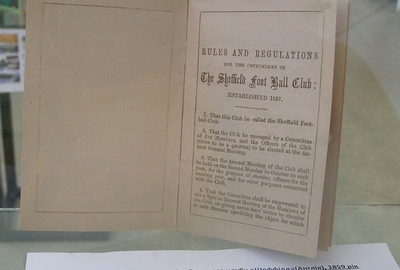 After the formation of the Football Association in 1863, things moved relatively quickly in terms of the development of the game. New rules were introduced on an almost yearly basis, including in 1877 when the Sheffield Rules and the London Rules were incorporated together to make something approximating the rules that we know today. Not all of those rule changes had an impact on the markings of the pitch, however. When it was decided that players could no longer be offside from a throw, for example, it wasn’t necessary for their to be markings on the pitch to denote that. Yet when the rules changed in 1887 to stop goalkeepers from handling the ball in the opposition half, it became necessary for referee’s to know where on the field the halfway point was.
After the formation of the Football Association in 1863, things moved relatively quickly in terms of the development of the game. New rules were introduced on an almost yearly basis, including in 1877 when the Sheffield Rules and the London Rules were incorporated together to make something approximating the rules that we know today. Not all of those rule changes had an impact on the markings of the pitch, however. When it was decided that players could no longer be offside from a throw, for example, it wasn’t necessary for their to be markings on the pitch to denote that. Yet when the rules changed in 1887 to stop goalkeepers from handling the ball in the opposition half, it became necessary for referee’s to know where on the field the halfway point was.
One of the biggest changes occurred in 1891, when the penalty kick was introduced as a form of punishment for players other than the goalkeeper handling the ball within twelve yards of the goal line. Equally, a penalty could be awarded for foul play within the area, meaning that referees needed to be able to see exactly where that area began and ended. That was why pitch markings were introduced, dictating where both the goal area and penalty area were located as well as the location of the centre spot and the centre circle. The markings that were laid down were probably more similar to what a modern day supporter would expect to see on a rugby pitch than a football one, though. The centre-circle and halfway line were familiar enough, but the penalty are was denoted by a dotted line eighteen yards from the goal and going across the width of the pitch.
The twelve yard line was put in place, with penalty takers able to strike the ball from anywhere along that line. An interesting concept when you realise that the line went all the way across the pitch as a mirror of the eighteen yard line. The goalkeeper’s area was put in place, but it wasn’t the box that we’re used to nowadays. Instead it was in a shape that can really only be described as looking like a pair of breasts. It began a couple of foot either side of the goalposts and curved up to meet in the middle of the goal, but rather than meet as a full curve it came together as the lines do at the top of a Valentine’s Day heart. The football pitch began to take on a shape far more similar to what we’re used to in this day and age, though it had enough differences to mean that a modern fan wouldn’t have been one-hundred percent confident of what they were looking at if they saw it.
The Modern Football Pitch
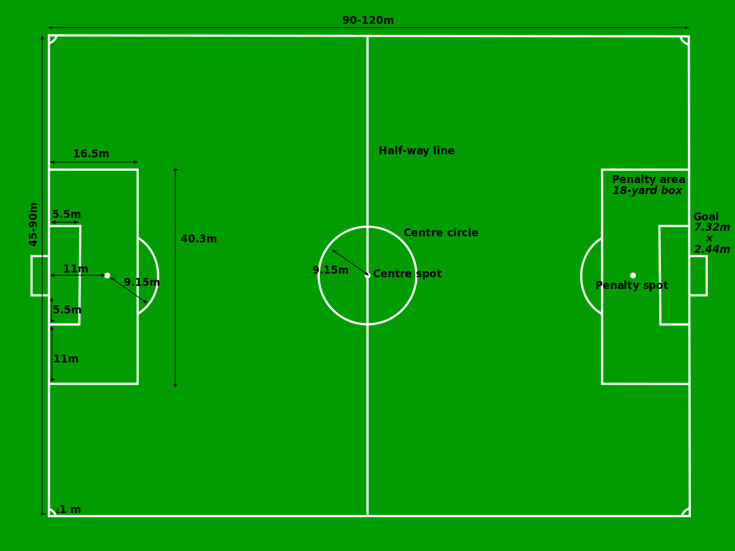
It would take another eleven years for the humble football pitch to begin to look like the one that you’ll come across today, whether you head to Celtic Park, Anfield or Camp Nou.
The penalty area became the rectangular box that we know and love, whilst the six yard box flattened down and became something of a hybrid between the ‘boob’ area we mentioned before and the line at the twelve yard mark that was in place previously.
One part of the pitch that was interesting was the size of the centre circle.
It was different in 1902 to how it was in 1891, with the earlier year seeing a much larger size in place. It had a radius of about twenty yards back in 1891, but it had shifted to around the ten yard mark by 1902
Who Decides The Rules Of Pitch Markings?
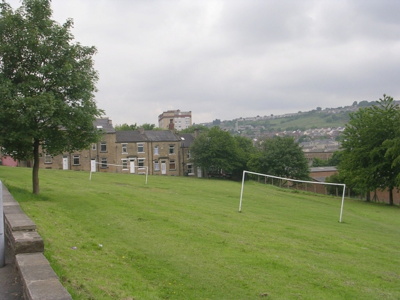
Who exactly is responsible for the look of a football pitch and the rules that govern it is something that has changed over the years that the game has been played. At least, it changed up until 1886 when the International Football Association Board was formed. The reason for this was that the rules being played in Wales, Scotland and Ireland were different from each other, with all of them having slight variations when compared to the English rules. The British Home Championship was first introduced in 1883, meaning that for the first few years each team would play the rules of the nation that was hosting the tournament. The 1886 formation of the IFAB put an end to that, with the organisation dictating the rules that would be played across the board.
Even today the rules are maintained by the International Football Association Board, with the organisation meeting every year to discuss any changes that should be applied to the way that the game is played. When FIFA was formed back in 1904, the newly created organisation immediately confirmed that would adhere to any and all rules decided upon by the IFAB. Nowadays there are six people sitting on the panel each year, with four coming from FIFA in order to represent the many members that are part of the organisation. FIFA’s representative joined the board in 1913, whilst until 1958 the various British associations held enough sway to be able to impose a change to the rules against FIFA’s wishes. People might refer to ‘FIFA’s Laws Of The Game’, but in actual fact the laws are IFABs.
As it’s the International Football Association Board that decides what changes, if any, will be applied to the game, it stands to reason that they’re also the ones responsible for making any alterations to the pitch markings. On that front, there have been very few changes to the rules since back in 1902. In fact, the most recent hugely noticeable difference to the layout of the pitch came in 1937 when the penalty arc was introduced. It wasn’t something that the English Football Association had considered, but it had worked on the continent so some of the European Associations recommended its introduction. It was designed to keep players ten yards away from the person taking a penalty kick.
The Future Of The Football Pitch Layout
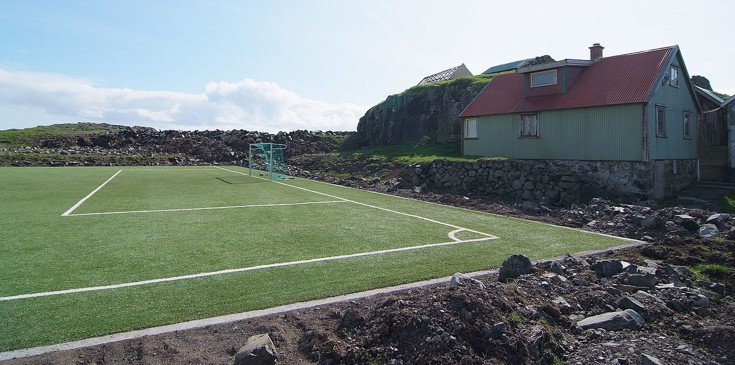
The reality is that most football fans are extremely resistant to change. When goal line technology was first mooted, there was a section of supporters that vehemently opposed it because it took football away from the ‘pure’ sport it used to be. Likewise, the Video Assistant Referee isn’t something that has proven to be universally popular since its use was allowed and trialled in 2018. Not that the objection of supporters has ever been something that the Football Association, FIFA or the footballing authorities in general have ever been all that bothered about, of course.
If the powers that be decide that a rule will be introduced or changed in football then it will be introduced or changed, regardless of what supporters think of it. Yet goal line technology and the use of VAR isn’t something that fundamentally alters how football is played. If anything, the use of modern technology allows referees to ensure that the game is played exactly as it should be and the rules are properly adhered to. An alteration to the layout of the football pitch that we all know and love will fundamentally affect the way that the fame is played, which is something that even FIFA would need to think long and hard about before authorising. Imagine if the penalty area was made smaller, for example, or the arcs at the corner flags were extended, how long would it take supporters, players and managers to adapt to?
There’s no way of predicting the future, of course. The introduction of the Video Assistant Referee might well dictate the need to make the lines on the pitch clearer, say, or may help us to realise that there’s a rule of the game that we’ve not been getting right for years. It’s tricky to envisage either of those things leading to the need to change the look of the football pitch, given that we’ve managed perfectly ok since 1937. Yet football is an ever-evolving beast, with a constant need to make it as close to perfection as it’s possible to get. If someone can think of a reason why a new pitch marking might need to be introduced, it’s difficult to see those in charge of the game refusing to allow it to happen.
